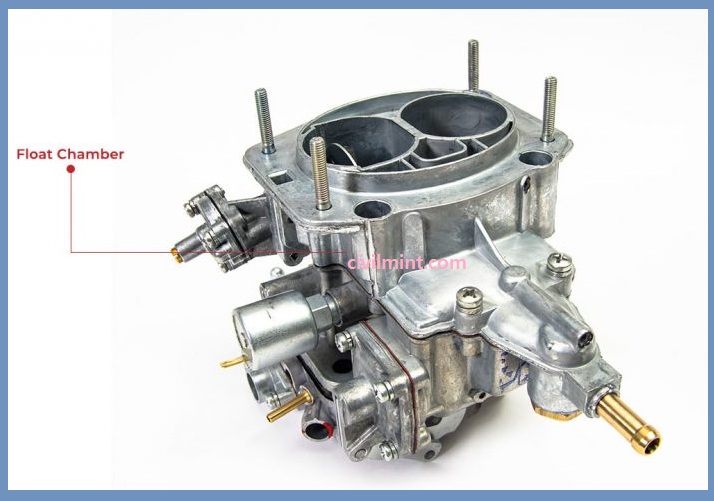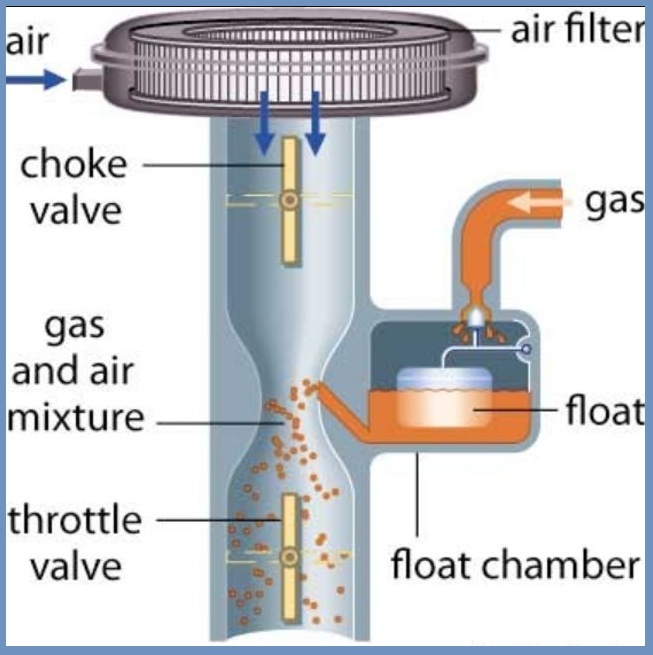A carburetor is a mechanical device that mixes air and fuel in a specific fuel-to-air ratio and delivers it to the internal combustion engine for combustion.
Specifically, a carburetor is a pipe that draws fuel and air through the valves, mixes them, and delivers that mixture to the engine to drive the vehicle.
The main feature of the engine is to generate power by igniting the fuel-air mixture and turning the vehicle. The carburetor is known as the “heart” of the car engine. When the “heart” is not working properly, you cannot expect the motor to function properly or not be able to receive adequate power. If the engine is not working properly, your car cannot run normally.

Table of Contents
How Does Carburetor Work?
The carburetor is the most important part of an internal combustion engine. The main purpose of the carburetor is to provide the right fuel-air mixture to the engine.
A carburetor works like this:
- First of all, a strainer receives fuel from the garage tank and transfers it into the waft chamber. This strainer acts as a filter. It gets rid of particles and different stable contaminations from the gas, which may also block the gas passages.
- A waft makes use to preserve a selected degree of gas withinside the waft chamber. As the gas degree withinside the waft chamber will become decrease than the favored degree, the waft action downward.
- The downward movement of the waft opens the gas shipping valve and lets the gas go into the waft chamber. As the gas restriction will become the same as the favored restriction, the waft rises, the gas shipping valve closes, and gas shipping into the waft chamber stops.
- The venturi tube and waft chamber are related thru a gas discharge nozzle.
- One gives up on the gas discharge nozzle connecting with the venturi tube, even as the opposite gives up connecting with the waft chamber base. It is set up barely above the waft chamber bottom (as proven withinside the above diagram). This layout prevents overflow whilst the engine is closed off.
- During the suction procedure, the air first enters the cylinder through a venturi tube. This tube has a steadily reducing cross-phase and is the smallest place on the throat.
- The gas discharge nozzle is attached to the venturi tube throat. As the air enters the throat, its pace will become very excessive. Because of this excessive speed, the air strain withinside the throat will become much less than the gas strain withinside the waft chamber.
- In this way, a strain distinction generates among the venturi tube and waft chamber. This strain distinction is referred to as carburetor depression. This works as a riding pressure for gas.
- As the strain distinction generates, the gas begins to move from the waft chamber into the venturi tube through a gas shipping valve.
- The air-gas ratio varies in line with the scale of the metering device and the release jet. As the air and gas blending procedure is completed, the throttle valve opens, and the air-gas aggregate is brought into the cylinder.
- In the case of the SI engine, the cylinder has a reciprocating piston. This piston compresses the air-gas aggregate and generates power.
- When the engine wishes a wealthy aggregate, an idling device makes use to deliver extra gas withinside the venturi tube.

Various Types of Carburetors
- Down-draft Carburetor
- Up-draft type carburetor
- Horizontal Type Carburetor
Pros
- Carburetor costs are lower than fuel injection systems.
- It needs low maintenance cost.
- A carburetor has more precision and power than a fuel injector in terms of the road surface.
- These systems require little maintenance and repair.
- Carburetor motorcycles are cheaper than gasoline-injected motorbikes. A
- The well-maintained carburetor has a long service life.
Cons
- It consumes more fuel than fuel injectors.
- Motorcycles equipped with carburetors have a high emission rate.
- They are not as environmentally friendly as fuel injectors.
- They are outdated devices. In winter, carburetor vehicles are difficult to start.
- They waste more fuel than fuel injectors.
Uses
- Carburetors are used for SI engines.
- The carburetor is used to regulate the speed of the car.
- They turn gasoline into tiny droplets and mix them with air to form a gasoline mixture.
